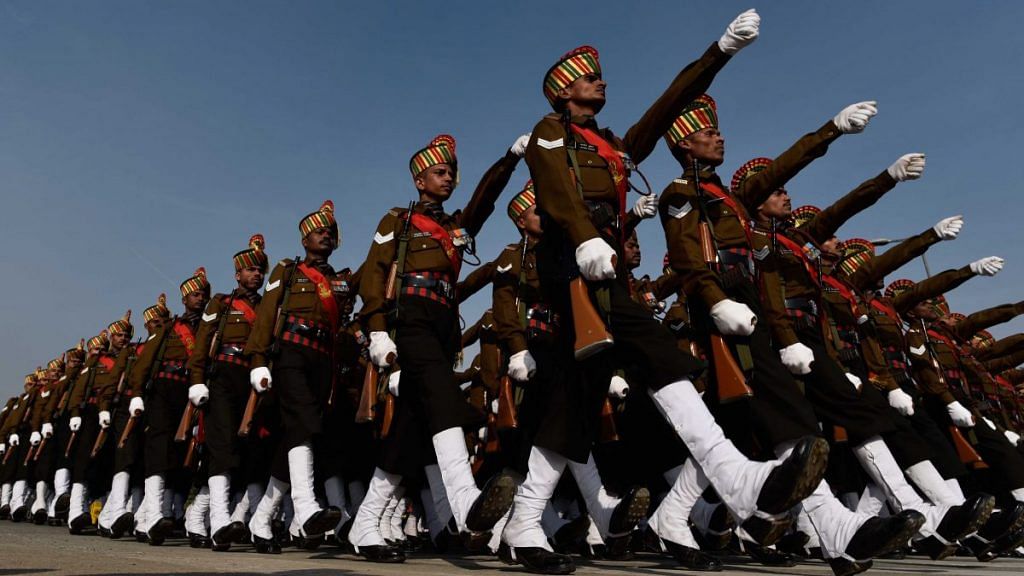The decision will no doubt throw up more talented officers to remain in contention for the appointments of Army Commanders.
Understanding the promotion policies in pyramid-shaped Indian Army cadre, especially at the officer level, can be challenging. Even more so for senior cadres.
So what has changed in all this with the tweaked promotion policy announced on 27 December? The answer is simple; it is just the residual service clause for the appointment of Army Commanders (C-in-C). Simply put, it is the balance service before retirement. It used to be 24 months when the vacancy arises, it has now been reduced to 18 months. The same has been made applicable to Heads of Arms/Services (HoA/S) for whom it rested earlier at 12 months.
The change in rule alters the dynamics of succession to the posts of 7 x C-in-C plus the Vice Chief, and for the appointment of the next and successive Army chiefs.
It is important to explain why the erstwhile 24-month rule was adopted in the first place during the time of General K. Sundarji (1986) and why it is being reduced to 18 months.
Recalling the time of the appointment of one Chief Justice of India for just 18 days will make it easier to appreciate the original 24-month decision.
The first thing to remember is that there is a common rank of C-in-C and Corps Commanders: Lt Gen. When a C-in-C of that time retired at the age of 58 (increased to 60 in 1998) the next senior fully qualified Lt Gen., who could be of age 57 years and 9 months, would have to be appointed C-in-C, even if it meant serving just three months in that appointment. A piquant situation had arisen with a number of such Lt Generals being appointed Cs-in-C, only to hold the appointment for a short period. To stabilise tenures in the appointment of C-in-C to a minimum of two years and allow Corps Commanders to contribute post their command, a policy decision was taken. As per this, Lt Generals could be appointed C-in-C (after commanding a Corps) only if they had a minimum of 24 months of residual service and Corps Commander if they had 36 months to serve in the rank (both ranks being Lt Gen.).
In 1997, the Army adopted the vacancy-based promotion system, the essence of which manifested in a calendar batch of officers being given the number of vacancies of the rank arising in a year. It meant that the age profile of officers in various ranks would remain static. For colonels to brigadiers, the age profile was effectively reduced through the subsequent additional vacancies given by the government after the Ajai Vikram Singh Committee (AVSC) report in 2003-04.
However, the additional vacancies of Lt Gens and Maj Gens were limited, and there was a re-entry of many aspirants for promotion through the statutory complaint and legal intervention routes. This upset the annual vacancy equation and the age profile at these ranks actually increased.
This made it difficult for some outstanding Lt Gens with a slightly older age profile to be appointed Corps Commanders and, in turn, some Corps Commanders could not be elevated to C-in-C because the residual age clause could not be met. Some younger but less qualified and lower profile officers benefitted.
The 24 and 36 months residual service rule led to a less than optimally talented Army leadership. The Air Force and Navy had long ago already fixed the residual period to just 12 months for its Cs-in-C.
The Army has now altered its policy with approval of the government and limited the residual service for Cs-in-C to 18 months but has left the 36-month rule for Corps Commanders untouched. The latter part could have been reduced to 30 months, except that the Army wishes to have its Corps Commanders command their formations for more than 12 months for better tenure stability and yet be eligible for C-in-C; the age equation does not permit that if the residual tenure is reduced to 30 months. That is all the more reason for the Army to endeavour to reduce the overall age profile of its senior cadres.
The age profile can be reduced through a drastic step such as reduction in approval percentages for senior ranks or by giving more upgraded appointments but there is a finite limit to those numbers of appointments. The intent should be to have a General Officer serve five years each as Maj Gen and Lt Gen. This will ensure the best talent is always available to tenant crucial senior appointments with officers of sufficient experience and not just quick ‘promotees’; it is no fault of those ‘promotees’ though, the system has evolved them.
Lastly, the other decision to increase the residual service period for Heads of Arms/Services (HoA/S) from the current 12 months to 18 months is apt, but again, unless the system endeavours to reduce age profile, many of the best Lt Gens (other Arms/Services) with proven talent will be axed out, making way for average talent.
The current decision will no doubt throw up more talented officers to remain in contention for the C-in-C appointments; otherwise they would either superannuate or be over-age before this consideration.
